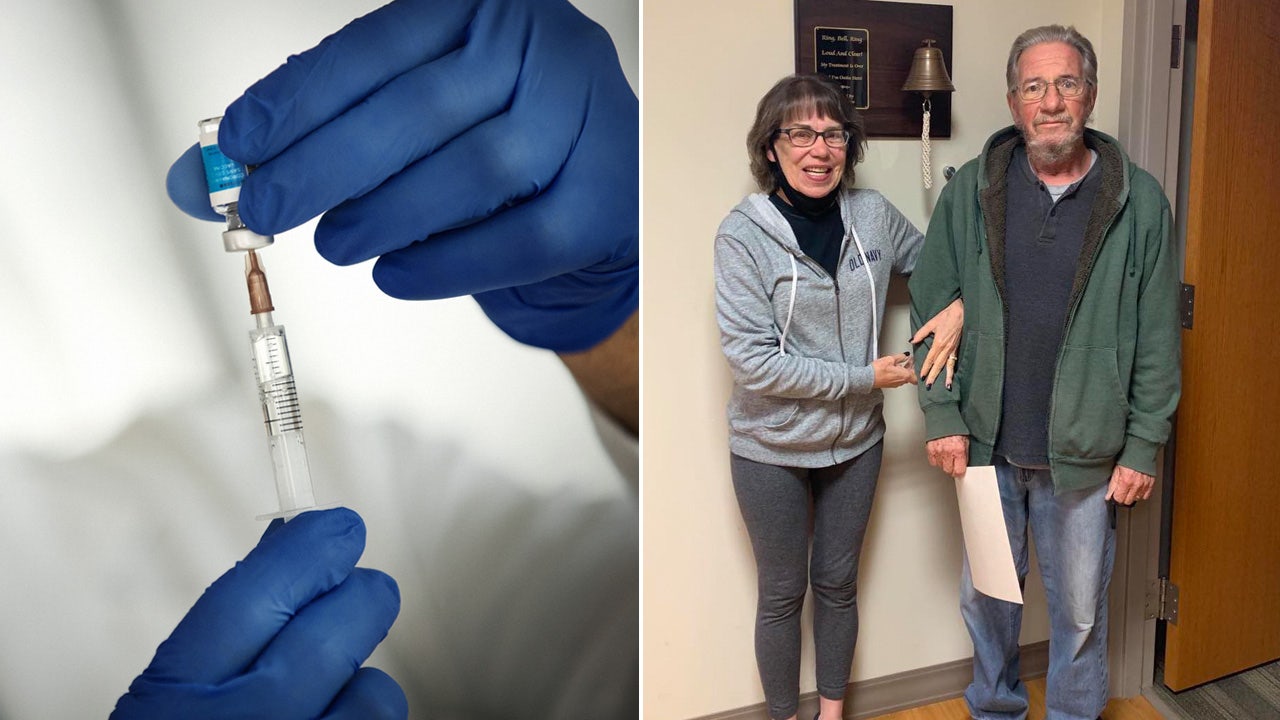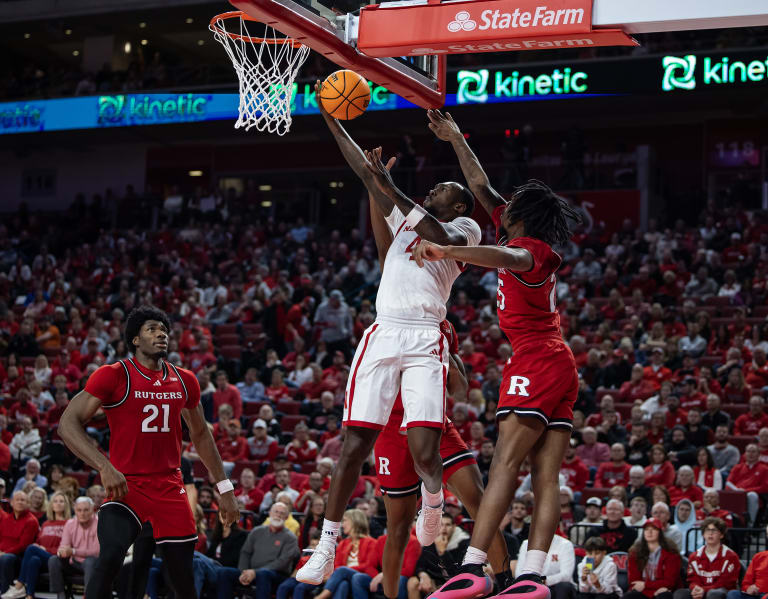Health
Why immunotherapy is emerging as the ‘fourth pillar’ of cancer treatments, experts say

For decades, the go-to treatments for cancer have been chemotherapy, radiation and surgery — but a fourth option is showing promising results.
Immunotherapy — which some experts are calling the “fourth pillar” of cancer treatments — is a relatively new approach that taps into the power of the patient’s immune system to fight the disease.
“If we look historically at how we treated cancer, primarily for most of the 20th century and the early part of the 21st century, cancer care was either surgery to cut it out, radiation to burn it or chemotherapy to poison it,” Dr. Michael Zinner, CEO and executive medical director at Miami Cancer Institute, which is part of Baptist Health South Florida, told Fox News Digital via email.
NEW LUNG CANCER SCREENING GUIDELINES INCREASE ELIGIBILITY FOR HIGH-RISK PATIENTS: SHOULD YOU BE SCREENED?
“And then, around 20 to 25 years ago, we began to have targeted therapies,” Zinner said.
“We figured out that certain cancers have certain mechanisms that we can target with a specific drug, having zero side effects.”
Immunotherapy, which some experts are calling the “fourth pillar” of cancer treatments, is a relatively new approach that taps into the power of the patient’s immune system to fight the disease. Anthony Hall, pictured at right, received immunotherapy for lung cancer in 2022. (iStock/Anthony Hall)
That targeted therapy eventually led to personalized cancer care, he said, and then to the “next great development.”
Immunotherapy had been in development for 40 to 50 years, Zinner said — “and finally it has now blossomed.”
“We’ve gone from surgery, to radiation, to chemotherapy, to targeted therapy, and now immunotherapy to use the body’s own cells and immune system to turn on the cancer, which is a foreign substance.”
How immunotherapy works
In cancer patients, the immune system is generally dormant, explained Julian Adams, PhD, chief science officer of Stand Up to Cancer (SU2C) in Boston, Massachusetts.
“Immunotherapy awakens the body’s immune system, which then targets cancer,” he told Fox News Digital in an email.
LUNG CANCER: TYPES, SYMPTOMS AND TREATMENT OPTIONS
Dr. Marc Siegel, clinical professor of medicine at NYU Langone Medical Center and a Fox News medical contributor, said the idea is that cancer “makes itself invisible to the immune system, which is looking for foreign invaders to eliminate.”
Immunotherapy then “lights up” the cancer up to be identified by the immune system for destruction, he said.
There are two main ways that immunotherapy accomplishes this, Siegel said.

“Immunotherapy awakens the body’s immune system, which then targets cancer,” a doctor told Fox News Digital. (iStock)
The first is through the use of “checkpoint inhibitors,” which are targeted treatments that block the proteins that keep the immune system from fighting cancer cells.
“Checkpoint inhibitors stop the cancer from doing its disappearing act,” Siegel noted.
The second type of immunotherapy targets mutated or abnormal proteins on the surface of the tumor, which are often involved in its growth, the doctor said.
“Historically, cancer care was either surgery to cut it out, radiation to burn it or chemotherapy to poison it.”
This includes CAR-T cell therapy, which involves removing immune cells called T cells from the patient’s body, altering them in a lab to make them fight cancer more effectively — and then putting the cells back into the patient’s body.
Beyond treatment, immunotherapy is also used in the application of cancer vaccines, Adams noted, which are emerging as a way to treat patients in remission or post-surgery to keep the cancer from coming back.
Immunotherapy in action
Stand Up to Cancer has supported research into both types of immunotherapy, Adams said.
In one clinical trial, rectal cancer patients who recently received a promising immunotherapy drug had a 100% response rate.
NOVEL CANCER TREATMENT OFFERS NEW HOPE WHEN CHEMO AND RADIATION FAIL: ‘BIG CHANGE IN PEOPLE’S LIVES’
“All 18 patients in the trial had their cancer disappear, without the need for the standard treatments of radiation, surgery or chemotherapy,” he told Fox News Digital.
“The cancer has not returned in any of the patients, some of whom have been cancer-free for up to two years.”
In another trial supported by SU2C, pediatric cancer researchers developed a CAR T-cell therapy to treat B-cell acute lymphoblastic leukemia, which is a blood and bone marrow cancer, in children and young adults.
Outside of trials, an increasing number of patients are receiving immunotherapy in place of or in combination with chemotherapy and radiation.

Anthony Hall (far right), pictured with some of his family, was diagnosed with stage 3 lung cancer in 2022 and received immunotherapy along with chemo. (Anthony Hall)
Anthony Hall, 71, was diagnosed with stage 3 lung cancer in 2022, as his daughter, Erin LeMaster, told Fox News Digital.
The Ohio father and grandfather started chemotherapy and radiation in September 2022 for an eight-week period, receiving a total of 12 treatments.
CERVICAL CANCER DRUG RAISES SURVIVAL RATE BY 30% COMPARED TO CHEMOTHERAPY: ‘GAME-CHANGER’
“He had responded well to the chemo and radiation with very minimal side effects,” LeMaster said.
Then in November 2022, Hall started immunotherapy — with a drug called Imfinzi, a prescription medicine used to treat lung cancer.
“He had a very positive experience with the immunotherapy,” LeMaster told Fox News Digital. “He had no side effects at all, besides fatigue at times after treatment.”

Hall, pictured at right with his grandson, received immunotherapy in the form of a drug called Imfinzi, a prescription medicine used to treat lung cancer. (Anthony Hall)
“It caused no hair loss, no food aversion and no sensitivity to skin like the chemotherapy caused,” she added. “It was much easier on his body.”
The doctor told Hall’s family that side effects for chemo and immunotherapy are typically mild in older men.
“It caused no hair loss, no food aversion and no sensitivity to skin like the chemotherapy caused. It was much easier on his body.”
Hall received CT scans every three months, which showed that his cancer was responding to the treatment.
His last CT scan in October, however, revealed some growth of his original mass.
“So, per his oncologist, he will not receive this type of immunotherapy in the future,” LeMaster said.

Anthony Hall is pictured with his wife on the last day of his immunotherapy treatment. “We had a very positive experience with the immunotherapy,” his daughter told Fox News Digital. (Anthony Hall)
Hall is currently waiting for biopsy results to come up with a plan for further treatment, and he will likely need another round of chemotherapy and radiation.
“He may need surgery to remove the mass depending on biopsy results,” LeMaster said.
Immunotherapy vs. chemotherapy
With chemotherapy, Adams said, the treatment can initially eliminate cancer cells, but resistance can eventually develop.
“In certain cancers, immunotherapy can provide long-term, durable remissions,” he said.
Some cancers — such as melanoma, lung and bladder — are “very responsive” to immunotherapy, according to Adams.

Some cancers are more responsive to immunotherapy than others, doctors say. (iStock)
“Others, such as pancreatic and colon, remain ‘cold’ and poorly responsive,” he said.
For certain tumors, including kidney and melanoma, immunotherapy has replaced chemo, Adams noted.
“However, in other tumors, such as with lung cancer, a combination of chemo and immunotherapy can be used effectively.”
CLICK HERE TO SIGN UP FOR OUR HEALTH NEWSLETTER
In terms of side effects, chemo generally causes gastrointestinal side effects like nausea and diarrhea, Adams noted.
Immunotherapy, on the other hand, can lead to certain autoimmune side effects.
“Generally, both modalities can be managed with supportive care,” he said.
Future of immunotherapy
In the cancer care landscape, immunotherapy is still fairly young — only about 15 years old, Adams pointed out.
“We should expect even better and more advances in this field to treat cancers,” said Adams.
Immunotherapy is primarily used for blood cancers, but experts say it is moving in the direction of treating solid tumors.
Siegel pointed out that new immunotherapies are evolving and developing all the time, adding that artificial intelligence will likely play a role in its development.
“Right now, cellular therapy is pretty much only designed for liquid tumors – blood cancers like multiple myeloma, lymphoma and leukemia,” Zinner said.
“We’re moving into immunotherapy and cellular therapy for solid tumors like breast cancer, pancreas cancer and colon cancer.”
“We’re not quite there yet, but we’re moving in that direction.”
For more Health articles, visit www.foxnews.com/health.

Health
Elderberry Boosts Weight Loss and Improves Blood Sugar, New Study Shows

Sign Up
Create a free account to access exclusive content, play games, solve puzzles, test your pop-culture knowledge and receive special offers.
Already have an account? Login
Use left and right arrow keys to navigate between menu items.
Use escape to exit the menu.
Health
Chicago's Lincoln Park Zoo loses flamingo, seal to bird flu

The Avian Influenza has claimed the lives of a Harbor Seal and a Chilean Flamingo at Chicago’s Lincoln Park Zoo.
The zoo announced they received results that confirmed the highly pathogenic Avian Influenza was the cause of Teal, a Chilean Flamingo, and Slater, a Harbor Seal’s death.
“This is sad news for wildlife and for the zoo team. Not only are we facing the first known cases of HPAI in animals in our care, but we’ve lost two amazing animals,” said Director of Veterinary Services Lester E. Fisher and Dr. Kathryn Gamble in a statement. “While highly pathogenic avian influenza is a naturally occurring virus in free-ranging waterfowl, more mammal species have been reported to be susceptible to HPAI since 2022.”
ONE STATE LEADS COUNTRY IN HUMAN BIRD FLU WITH NEARLY 40 CONFIRMED CASES
The zoo announced they received results that confirmed the highly pathogenic Avian Influenza was the cause of Teal, a Chilean Flamingo, and Slater, a Harbor Seal’s death. (Lincoln Park Zoo)
The zoo was unable to confirm the source of the exposure, but the Centers for Disease Control say that HPAI is spread through saliva, nasal secretion and the feces of infected birds.
They did say that zoo visitors are not at risk of contracting the disease from the animals at Lincoln Park zoo.
“Because highly pathogenic avian influenza is spread by free-ranging birds, it is no riskier to visit Lincoln Park Zoo than to enjoy a walk outdoors,” said President & CEO and ornithologist Megan Ross. “The zoo remains a safe place to connect with the animals in our care.”
BIRD FLU LEADS TO SEVERE HUMAN ILLNESS AND STATE OF EMERGENCY; EXPERTS DISCUSS RISK

The zoo announced they received results that confirmed the highly pathogenic Avian Influenza was the cause of Teal, a Chilean Flamingo and Slater, a Harbor Seal’s death. (Lincoln Park Zoo)
The zoo has been monitoring HPAI, so there is a response plan in place. The plan addresses staff and animals. It includes personal protective equipment and removing cross contamination between species while monitoring individual animal behavior, according to a statement by the zoo. They have also closed the McCormick Bird House and will be closed until further notice.

The zoo announced they received results that confirmed the highly pathogenic Avian Influenza was the cause of Teal, a Chilean Flamingo and Slater, a Harbor Seal’s death. (Lincoln Park Zoo)
The zoo also said in their statement that it’s important to keep personal pets indoors and away from wildlife.
“Sharing this news of highly pathogenic avian influenza in the area is important for our community at large,” said Director of the Urban Wildlife Institute Seth Magle. “To protect yourself, do not handle wildlife. Additionally, keep your pets safe by keeping cats indoors and dogs on a leash away from wildlife.”
Health
Insulin Prices Dropped. But Some Poor Patients Are Paying More.

Maricruz Salgado was bringing her diabetes under control. Thanks to a federal program that allowed health clinics that serve poor people to buy drugs at steeply discounted prices, she was able to pay less than $75 for all five of her diabetes medications every three months.
But in July, the cost of three of those drugs soared. Ms. Salgado, who does not have health insurance, suddenly faced costs of hundreds of dollars per month. She could not afford it.
Her doctor switched her to cheaper medicines. Within days of taking one of them, she experienced dizzy spells so severe that she said could barely keep up with her hectic daily schedule as a phlebotomist and an in-home caregiver. By the time she returned to the doctor in September, her blood sugar levels had ticked up.
“We were in a good place,” said Dr. Wesley Gibbert, who treats Ms. Salgado at Erie Family Health Centers, a network of clinics in Chicago that serves patients regardless of their ability to pay. “And then all the medicines had to change.”
The price hikes at the clinic happened for a reason that is symptomatic of the tangled web of federal policies that regulate drug pricing. In 2024, drug makers lowered the sticker price of dozens of common medications, which allowed them to avoid massive penalties imposed by the American Rescue Plan, the Covid relief package passed three years earlier. But that change backfired for low-income people like Ms. Salgado.
The decision to make these medications more affordable for large swaths of patients has quietly created another problem: a severe financial hit to the clinics that are tasked by the federal government with caring for the country’s poorest people. These nonprofit clinics operate in every state and serve nearly 32.5 million people, or about 10 percent of the country’s population.
“It’s the law of unintended consequences,” said Beth Powell, the director of pharmacy at The Centers, which operates five community health clinics in the Cleveland area. Ms. Powell said that while many consumers benefited from the companies’ decision to lower prices, “for our folks, that is not the case.”
More than 1,000 community health clinics around the country rely on a decades-old federal program that requires drug companies to offer them deep discounts.
Under the 340B program, as it is called, companies typically sell their brand-name drugs to clinics at a discount, at 23 percent or more off the list price. The same discount scheme applies to state Medicaid plans. But if a company raises a drug’s list price above the rate of inflation, a penalty kicks in, forcing it to offer even deeper discounts to the clinics.
For years, that meant that every time a company raised a drug’s list price above inflation, community clinics paid less for it. Many drugs, including insulin, essentially became free.
But the American Rescue Plan made a major change that hit drug companies with even larger penalties for raising prices. In January 2024, companies that continued to raise a drug’s price would have to pay state Medicaid plans every time those drugs were used, potentially costing the industry billions of dollars.
“That was a bridge too far” for the companies, said Antonio Ciaccia, a drug-pricing researcher who advises state governments and employers.
Manufacturers lowered the price of at least 77 drugs in 2023 and 2024, according to an analysis by a nonprofit that Mr. Ciaccia leads. The list includes widely used asthma drugs like Advair and Symbicort, as well as diabetes treatments like Victoza, which Ms. Salgado used before the change.
Once the pharmaceutical companies lowered their list prices, the inflation penalties evaporated. That meant community clinics had to start paying the usual discounts of 23 percent or more off the list price — far more than the pennies they used to pay.
“Unfortunately, the complexities of the U.S. health care system can reduce access and affordability for many,” Jamie Bennett, a spokeswoman for Novo Nordisk, which makes Victoza, said in a statement. “Even when we lower our prices, too often people don’t receive the savings — this is a problem.” She said the company also has patient assistance programs to make its products more affordable.
David Bowman, a spokesman for the Health Resources and Services Administration, which oversees the 340B discounts, did not respond to questions about how community health clinics were affected by the lowered drug prices. He said that other recent policies, including directing Medicare to negotiate the price of drugs, had lowered drug costs for low-income patients.
Because of a six-month lag in the way that 340B discounts work, clinics were hit by the change last July. Some clinics began calling patients before their prescriptions expired, offering to switch them to less expensive medicines even though they sometimes had more serious side effects. Others decided to cover the higher out-of-pocket costs, which required dipping into already scarce reserves.
Ms. Salgado said a nurse from Erie called over the summer to tell her about the pricing changes. Until then, she had paid about $15 for a three-month supply of Victoza, which is injected daily to keep blood sugar down. After July, the cost rose to more than $300.
After a few weeks, Ms. Salgado adjusted to the replacement, Byetta, and her dizziness subsided. But the drug must be injected twice a day instead of once. And Ms. Salgado must now use a special pharmacy 20 minutes from her house to qualify for the federal discount on the two insulin drugs she was switched to, the result of increasingly strict rules that companies are imposing on health clinics.
Ms. Salgado, who is 39, said she is determined to avoid the fate of her mother, who died of diabetes complications at 54. But keeping up with frequent pharmacy visits and medication changes is tough. “Sometimes it does get to a point where it’s like, I just don’t want to do this anymore,” she said.
The changes are also making it harder for community clinics to offer other services.
Under the 340B program, clinics buy the discounted drugs on behalf of their patients. When those patients have insurance, the clinics can then bill insurers for the regular, higher price, pocketing the difference. But now that spread — the difference between how much they pay for the drug and what insurance will cover — has dwindled. That has left clinics with less money to spend on services that are not otherwise covered by government grants or insurance, such as helping patients find housing.
At Valley View Health Center, a network of clinics that serves patients in rural Washington, the 340B money once financed a mental health program that employed eight therapists. In September, the clinic halted the program, laying off the therapists.
“It was such an abrupt change for us that it has definitely affected our ability to care for our patients the way that we needed to,” said Gaelon Spradley, the clinic’s chief executive.
Some patients who have seen costs go up have qualified for patient-assistance programs offered by drug makers. That was the case for Lorena Sarmiento, another patient at Erie Health who uses Lantus, an insulin pen. Last fall, after the 340B discount changed, she was quoted $490 at her pharmacy — the retail price for a box of insulin pens. Erie Health sent her to another pharmacy, which helped her sign up for a manufacturer’s coupon that lowered her cost to $35 per month.
Doctors and pharmacists at several health clinics said such drug-company assistance programs can be hit or miss. Sometimes they last for a limited time or require that a patient reapply regularly. Patients often have to be legal residents of the United States or have a fixed address.
“It’s a lengthy process, and it’s a lot of hoop-jumping,” said Michael Lin, the chief of pharmacy operations at Family Health Centers in Louisville, Kentucky.
Ms. Sarmiento and her husband, Luis, spend about $500 per month on her medical needs, including special food, medications and a glucose monitor. They are no longer facing the highest insulin price, but their costs are still 10 times what they were just a few months ago, when they spent about $10 on three months’ worth of insulin.
Mr. Sarmiento said he tries not to complain. “You always have to look on the good side,” he said. “But lately, that’s been hard.”
-
/cdn.vox-cdn.com/uploads/chorus_asset/file/25822586/STK169_ZUCKERBERG_MAGA_STKS491_CVIRGINIA_A.jpg)
/cdn.vox-cdn.com/uploads/chorus_asset/file/25822586/STK169_ZUCKERBERG_MAGA_STKS491_CVIRGINIA_A.jpg) Technology1 week ago
Technology1 week agoMeta is highlighting a splintering global approach to online speech
-

 Science5 days ago
Science5 days agoMetro will offer free rides in L.A. through Sunday due to fires
-
/cdn.vox-cdn.com/uploads/chorus_asset/file/25821992/videoframe_720397.png)
/cdn.vox-cdn.com/uploads/chorus_asset/file/25821992/videoframe_720397.png) Technology1 week ago
Technology1 week agoLas Vegas police release ChatGPT logs from the suspect in the Cybertruck explosion
-

 News1 week ago
News1 week agoPhotos: Pacific Palisades Wildfire Engulfs Homes in an L.A. Neighborhood
-

 Education1 week ago
Education1 week agoFour Fraternity Members Charged After a Pledge Is Set on Fire
-

 Business1 week ago
Business1 week agoMeta Drops Rules Protecting LGBTQ Community as Part of Content Moderation Overhaul
-

 Politics1 week ago
Politics1 week agoTrump trolls Canada again, shares map with country as part of US: 'Oh Canada!'
-
/cdn.vox-cdn.com/uploads/chorus_asset/file/23935558/acastro_STK103__01.jpg)
/cdn.vox-cdn.com/uploads/chorus_asset/file/23935558/acastro_STK103__01.jpg) Technology5 days ago
Technology5 days agoAmazon Prime will shut down its clothing try-on program















